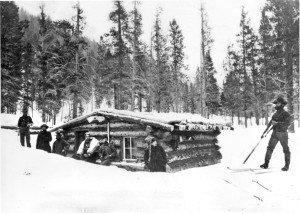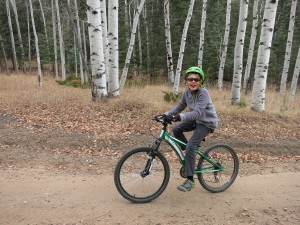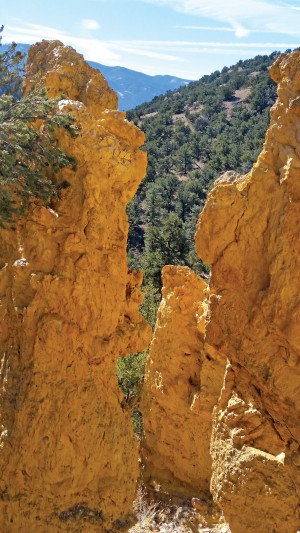By George Sibley
T.S. Eliot was wrong: November, not April, is the cruelest month, teasing us not with lilacs from a dead land, but with flirty little snowstorms that promise much but deliver little.
Yes, it’s the November doldrums again over here on the west side of Central Colorado, where we are waiting, as usual in November, for snow. Lots of snow. Monarch Ski Area, on the east side, opened Nov. 20 on a 20-inch base and a prayer, and Crested Butte opened Nov. 25 for Thanksgiving with about the same, plus some manmade stuff.
That’s better than nothing, but nowhere near enough to get through the holiday season – the equivalent for ski resorts of “Black Friday” for merchants. One year, when I was still working on the Crested Butte ski patrol, only a beautiful 20-inch dump the day before Christmas saved the holiday season. Then there was the winter of 1976-77 when no snow at all came until February, and the Christmas season was a dead loss for all the Colorado ski areas except for Keystone, which had begun installing snowmaking equipment due to a chronic low-elevation snow problem. The next year, nearly everyone (except Monarch) was installing snowmaking equipment.
In those earlier years here, I prayed for snow for the sake of the ski industry that supported me. Now, with a lot of time and energy invested in larger water issues, those prayers to the unknown god have broadened to include just about everything that happens in the American Southwest and lower Midwest. Everything that needs water anyway, and I can’t think what that excludes.
So, like everyone who has lived here for a while, I spend a lot of time wondering, thinking about what the weather will do to us – especially in the fall, wondering about winter, the dominant season in the mountains, when most of our water comes (or doesn’t) in the form of snow. I’m not disciplined enough to have collected 50 years of temperatures, storm dates, wind directions and other measures that might have led me to an evidence-based hypothesis for projecting what the winter will bring – or might just have further confused me, especially now with anthropogenic climate change thrown into the mix.
[InContentAdTwo]
Over the years, however, I have managed to hone some intuitions with modestly consistent observations. One intuitive observation about our weather in Central Colorado has to do with the “weather divides” in the Southern Rockies. We’re well aware of the Continental Divide as a weather divide, with the orographic lift of Pacific storms leaving 80 percent of their moisture on the Western Slope and only 20 percent passing over into the Platte, Arkansas and Rio Grande Basins. About the same thing happens when Gulf weather comes up from the southeast, dropping two feet of snow on Salida while only a fraction makes it over the Divide to the Western Slope.
But there is another, less-acknowledged weather divide on the Western Slope, running east-west along the Elk Mountains and the Grand Mesa, between the upper Colorado River tributaries and the upper Gunnison River tributaries. Pacific storms that come ashore north of the San Francisco area tend to hit Colorado north of the Elks, but they only reach down into the Gunnison Basin if they are big, powerful fronts, and seldom have anything for the San Juan Mountains and southern Colorado. We saw this Nov. 20 this year, with Interstate 70 temporarily closed by a snowstorm: Loveland Ski Area got a foot of snow; Crested Butte (southern slope of the Elks) got an inch; Gunnison got wind; and the San Juans had a nice day.
Likewise, Pacific storms that land along the southern Californian or Mexican coast tend to hit the San Juans and the Gunnison Basin, but they only go north beyond the Elks when they are big. We haven’t seen one of those yet this year. (This intuitive deduction was more or less confirmed by a Colorado meteorologist, who called I-70 the weather break – but divides occur along mountain ridges, not in valleys.)
Either way, the west-to-east storms are riding in on jet streams, high “rivers of air” that circle the globe but tend to get pushed around some by high-pressure areas that in turn are created by events happening in the Pacific Ocean. A “high,” as it is called on weather maps, is basically a big column of descending dry, cool air. The highs of most importance to us in Central Colorado are the back side of the Hadley cells that start with massive volumes of rising warm, wet air in the tropics near the equator; the warm air cools as it rises and moves away from the equator, releasing its moisture as precipitation, and then begins to descend, most consistently just north and south of the tropics, creating the world’s great subtropical deserts where it descends over land (the Mojave, Sonora and Chihuahua Deserts in our Southwest).
Depending on the solar energy powering the Hadley Cells, those Pacific highs can expand north or south of the subtropical zone, well into the 40-degree latitudes. The jet streams (and the Pacific storms they carry) then get pushed north or south by those powerful highs. California’s serious drought the past two years was caused by a more or less impenetrable high persisting just off the coast.
T
hat brings us to the El Niño/La Niña phenomenon, along with a lot of other things going on in the Pacific Ocean, and intuition finds itself skating on thin ice at that point. These not-so-Pacific phenomena all seem to be dynamic and very complex balancing actions in a vast ocean that is unevenly heated.
The rising and falling air in the Hadley cells, pushed away from the equator in its rise, then drawn back toward the equator after its fall to complete the cell cycle, is also dragged by friction at the surface by the planet’s spin, causing the east-to-west trade winds. When the Hadley cycle is operating at full power, the trade winds push warmed surface waters westward, literally piling it up against Australia and the islands of Micronesia. This causes cooler water to rise in the eastern Pacific (La Niña effect), which damps down the power of the Hadley cycle in that area, and the cross-oceanic trade winds weaken – thereby letting warmed surface waters pool up instead in the eastern Pacific, off the coasts of South and Middle America (El Niño effect). This in turn – over a year or several years – powers up the eastern part of the Hadley cells; the trade winds amp up and start pushing the warm water across the ocean; and the cycle repeats – at a frequency and pace speeded or slowed, strengthened or weakened, by other things happening in the planet’s great solar engine, like the longer, slower expansion or contraction of cold-water masses in the North Pacific, and probably now including phenomena new to the global climate, like the loss of polar sea ice and melting glaciers.
But what does all that mean here in Central Colorado? Under La Niña conditions, with our side of the Pacific cooler, and the eastern Hadley cycle damped down with its high-pressure areas staying over their deserts where they belong, Pacific storms tend to come across north of the high-pressure areas, favoring regions north of the Elk Mountains divide.
But when the warm Pacific waters are on our side of the ocean – the El Niño effect – there’s a lot of moisture and heat energy rising in the Hadley cell. The descending high-pressure ridges grow beyond the tropics, and the storms the jet stream carries over the land tend to come south of the highs.
If it’s a strong El Niño, with the highs pushing beyond the 40th parallel, it will probably be a good year for the Southern Rockies below the Elk Mountains divide, and a not-so-good year above it (all the way up into Canada). If it is a weak El Niño, however, with the desert highs not moving much, the lower-power storms might make the deserts bloom, but they may not make it into the mountains much beyond the southern San Juans. 1976-77 was the classic weak El Niño; Purgatory Ski Area outside of Durango opened that year with dream conditions: “one foot packed base and six feet of powder.” Wolf Creek had about the same; Santa Fe and Albuquerque got drenched; and Colorado north of the San Juans got nothing until February.
So – where are we now? This is predicted to be a big, powerful El Niño fall and winter, but the fall has been disappointing so far, with the water year standing 10-20 percent below average (as of mid-November) in Central Colorado, and the storm pattern (such as it is) looking more like a La Niña or neutral year. As I write (Nov. 23), there’s a big El Nino-size high forming west of us all the way to the coast. So we’ll see. But as usual in late November, we’re still waiting for the big snow. ?
George Sibley writes and waits for winter in Gunnison.




